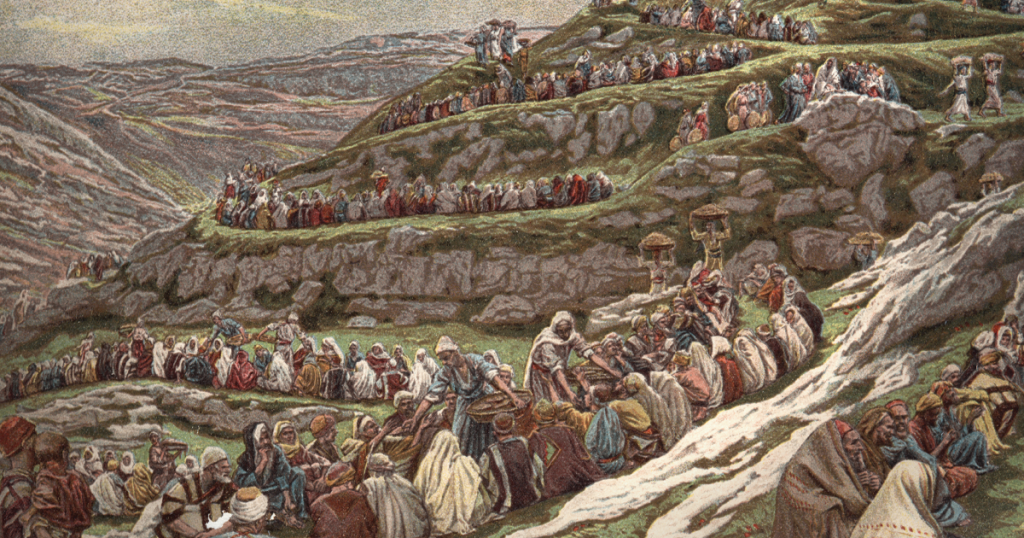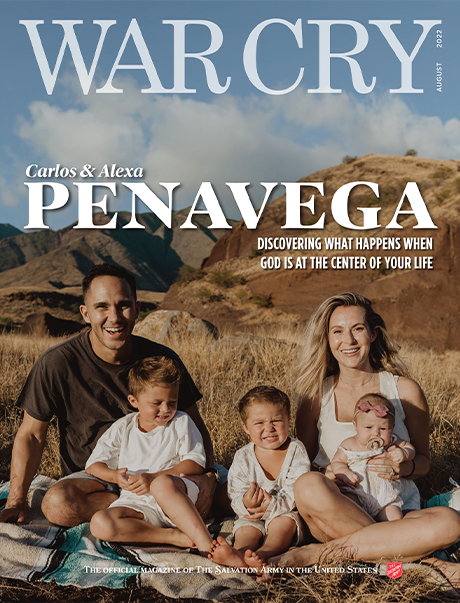Bread We Have—Hope We Lack
"Keep walking until you get to Jesus. He has the healing for your soul’s deepest needs and has room for you too."
When studying Scripture, we need to find the primary meaning and application of the passage, story or character. That is the proper way to interpret the Bible. However, if we get too comfortable with the story, we may overlook the little treasures hiding in plain sight. One treasure is found in the story of the feeding of the 5,000.
One can almost see the multitude milling about on a hillside outside of town, eager to get a better view of Jesus as He was preaching. If Jesus came today, He may need a stadium to accommodate the crowd.
All four gospels have an account of this mass feeding event, with slight variations. John is the only one to mention the young boy with the little lunch that Jesus used to feed thousands. John also records that the poor man referred to as “Andrew, Simon Peter’s brother,” was the one who found the lad willing to share without reservation or reward.
Earlier, Jesus asked Phillip about how to feed such a huge crowd. Phillip only saw an insurmountable problem rather than the divine possibilities. It is not surprising that food service was lacking on this hillside in the boondocks. With Jesus, however, there were always new lessons to be mastered.
According to Luke, the hillside gathering and the question of how to feed the large crowd came shortly after Jesus had sent His disciples to apply what they had learned. The disciples were personally commissioned and empowered by Jesus “to drive out all demons and to cure diseases…And He sent them out to proclaim the kingdom of God and to heal the sick” (Luke 9:1–2, NIV).
They were to accept what life gave, taking no extra resources for the trip. They were to rely on God to provide all their needs through the kindness of the people along the way. If people welcomed them, the disciples were to stay until their time was completed; if not, hit the road. They did as they were told and did a great job, going from “village to village, proclaiming the good news and healing people everywhere” (6).
In the interim, Herod the Tetrarch, who had executed John the Baptizer, heard about the disciples’ adventure and was troubled that the twelve were somehow like John—raised from the dead, performing miracles and fearlessly preaching and teaching (See 7–9).
When the disciples returned, they must have been bubbling over, eager to tell Jesus all they had experienced. Jesus took them to Bethsaida for a debriefing session. Since everyone knew what Jesus had done—preaching, teaching and healing—and then seeing similar things from His disciples in small towns and hamlets along the way, there was no way to keep the news hidden. Their retreat did not last long. Luke says “The crowds learned about it and followed him. He welcomed them and spoke to them about the kingdom of God and healed those who needed healing” (11).
Although there were a few curious onlookers when Jesus began His ministry, there were now crowds clamoring to hear His message. This is where we get to the miracle of the mass feeding with just a few small loaves of cheap barley bread and a few small, dried fish.
Late in the afternoon, the twelve came to Jesus after a long day, urging Him to “Send the crowd away so they can go to the surrounding villages and countryside and find food and lodging, because we are in a remote place here” (12).
Instead of sending people home, Jesus told the disciples to find food for the crowd. Other gospel accounts report that Phillip drew the food-procuring duty, and that all he could see was the problem—even after having had the ministry experience of a lifetime—seeing Jesus cast out demons, heal the sick and bring a child back to life.
Jesus divided the people into smaller, more manageable groups of 50 or so. He prayed and blessed the meager repast and began passing it out, without limit, until everyone had their fill and then some. To ensure that nothing was wasted, the disciples picked up 12 baskets of leftovers—enough for later (see 15–17).
This is an obvious miracle—doing much with little when the Lord blesses and uses it. Hidden in plain sight, however, is another miracle concealed in the well-known account.
Luke comments that there were an estimated 5,000 men in the crowd. That means the crowd would have been several times greater, since women and children were not customarily included in the count. Although they were not counted, none were excluded from Jesus’ compassionate care based on gender or age, since no detail or person in the Bible is there by accident. Buried in the lead up to the miracle is a tiny phrase concerning the crowd that followed Jesus to that remote place. “The crowds learned about Jesus and the disciples being in the neighborhood and followed him. He welcomed them and spoke to them about the kingdom of God and healed those who needed healing” (11).
Perhaps a far greater miracle happened just before Jesus fed them. He healed those who needed healing. How many might that have been?
We know the great tales of healing, including blind Bartimaeus, ten men with leprosy, Jairus’ daughter, various paralytics, epileptics and the demon possessed, and even raising the dead kid from Nain right in the middle of a funeral procession. And there were scores of others. How many made the weary, foot–sore trip to a wild meadow desperate for Jesus to make a change in their lives after all else had failed?
“Those who needed healing.” What did that look like? Perhaps men, women, children, young and old made their way to Jesus for the chance, no matter how remote, to be healed by Him. Many were no doubt out of options, having heard from each medical person along the way “There is nothing more that we can do.”
They came by the thousands, desperate for what Jesus could give them: hope. Jesus lived out the hope that, in the Kingdom of God, things could be set right. Life could be better since He had power over disease and death itself.
The crowd came on poorly made crutches, litters borne by friends and family, limping, crawling, dragging their broken bodies to get close to Jesus. Heads down, they shuffled ahead, longing for a shred of good news, if not for themselves, for the people they loved.
They came filled with sadness, praying that there would be room, and Jesus might be there for them. Perhaps they were grieving not only for their own lives but also for their children or spouse.
“Those who needed healing.” How would that crowd look today? Parents pushing a wheelchair occupied by a fragile child hanging on to life after chemotherapy; a young man with cerebral palsy; a veteran dealing with brain injury from an improvised explosive device in combat; a man on the street living out of a shopping cart; the man with the mask of rigidity from Parkinson’s; the woman enduring the agonizing deterioration of ALS. The list goes on and on.
As they came to Jesus with both desperation and expectation, they may not have understood all the theology. They may have only known that Jesus offered a second chance. Humans can deal with almost any crisis if they have hope, and Jesus provided it when no one else could.
Remember, those who came to be healed were not defined by what was wrong with them. The Lord sees beyond our ailments to the heart of who we are and who we can become, without any labels applied other than “sinner saved by grace.”
The gospel accounts do not indicate how long people stayed or how long Jesus healed them. The disciples were probably extremely tired after a long day of meeting people and handling crises. Perhaps they wanted time alone with their Master. However, it doesn’t seem to be Jesus’ way to leave people suffering if He could fix it. We can imagine that He did not stop the healing work until it was done. His mission to set right a fallen world filled with the mostly dead and good as dead was accomplished one hillside at a time. That is the real miracle, and good news indeed for a world desperate for hope and beset by problems, whether a pandemic, a disaster, a family conflict, or simply finding the means to get by another day. So, keep walking until you get to Jesus. He has the healing for your soul’s deepest needs and has room for you too.
You like bread and fish? We’ve got plenty.
Major A. Kenneth Wilson’s career as an active Salvation Army officer included serving as Assistant Editor-in-Chief at National Headquarters in Alexandria, VA.







